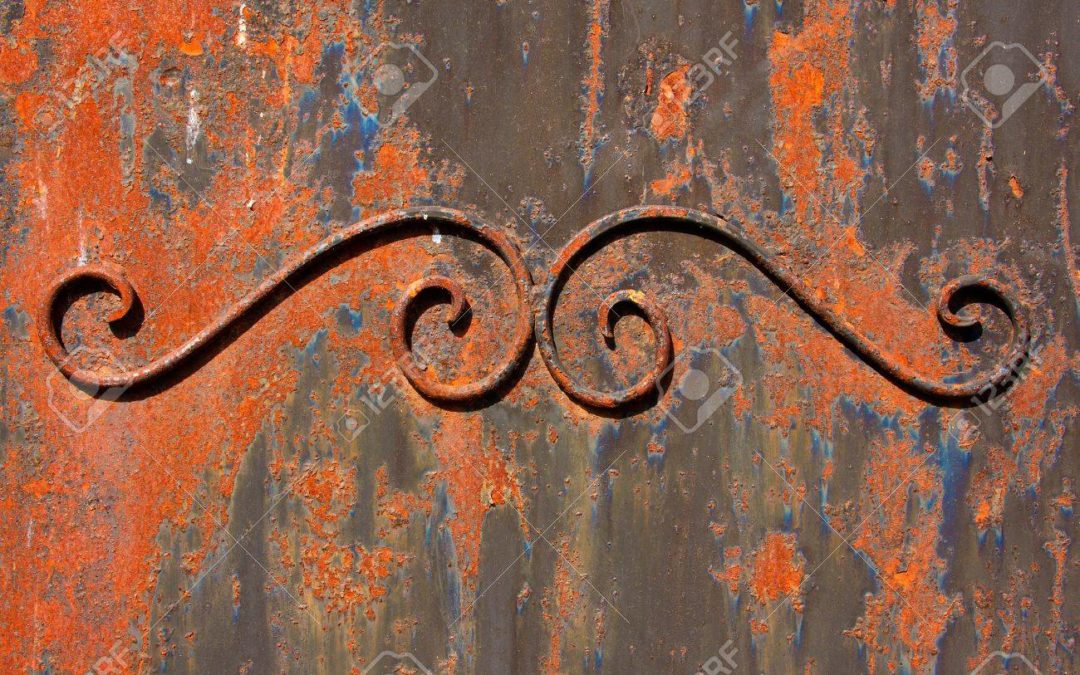making a rusty finish
Creating a faux finish on your Efex is fun. Today we are “making rust”.e rust. There are lots of different products to replicate a rust finish, along with different techniques. I wanted one without chemicals and one that was very quick and easy.
We started by putting together a combination of colors painting them on one of our R8 rosettes trying to make it rusty. Taking photos of this exercise, we realized that while they all look cool, none of them seemed rusty, weathered maybe but not rusty. It was time to go back and experiment further.
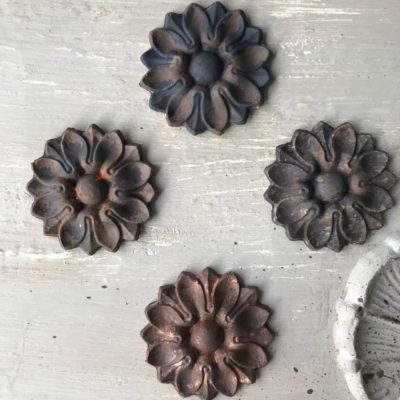
So what does rust look like? What are the distinct colors?
Rust starts with a combination of blacks and browns known as iron. Often wrought iron. Some metal is naturally black others iron are browner. But rust is not black and brown. It is more of a reddish color. So what does rust looks like? Well, I did not have far to look to find out.
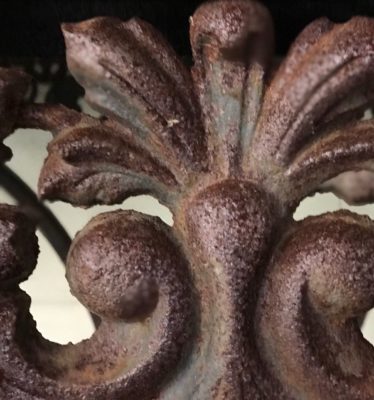
Then I took this photo of the rust on my antique French marble table that sits on our porch. Now that is lovely rust.
But the red color is bubbling up. It is not just sitting flat as a color it has texture. That is because of how rust forms. Water under the top coat of the iron object oxidized the iron, and it fails to create movement in the top layers and bubbling. This turns red. Real rust is not flat like the first samples we did. Humm….. so how to do this, so it seems realistic without using chemicals to change the color.
Everyone thinks of rust as having orange in it, And yes it does, but it also has a red part. One that is, in fact, reddish brown. Other times a range of hues and tones are incredible.
Rusty is sometimes the more red than brown. Natural rust formation usually occurs along the edges, on ridges and tops areas that might collect water. Having studied rust, I was ready to try round two of making rust
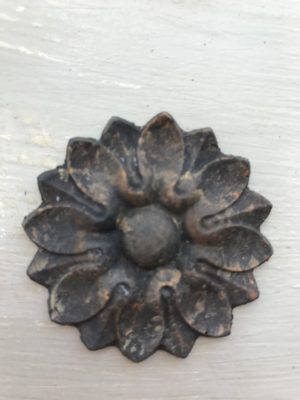
Step 1-Make wrought Iron. Painting a good wrought iron is simple. Mix two colors brown and black. This is your base coat. Paint it on and let dry.
Step 2 – Lay out three or four colors. Orange, red, yellow, and brown. (As an alternative you can use Burnt Sienna Acrylic paint for the red, orange and yellow) The second coat is where you make the magic. Rust is a really a reddish brown, so there are many ways to get this color. For this example, we mixed burnt sienna color into the brown paint until we reached the correct color.
Step 3 – Finally use Saltwash, fresco powder or any other paint additive to make the paint thicker. Mix entirely for your second coat. To apply the rust go over the top and edges, where rust would form with your new color pouncing it with a stiff brush and smoosh it around. It works well if you use a stencil brush for this part.
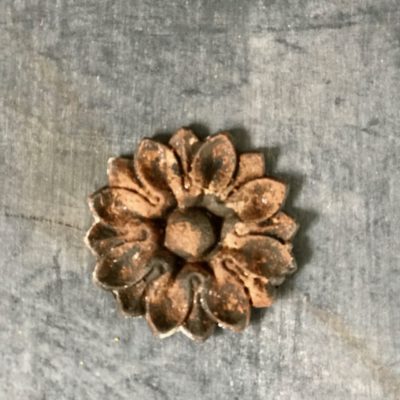
Clean your brushes let dry and voila you have rust. It is as simple as 1,2,3,

